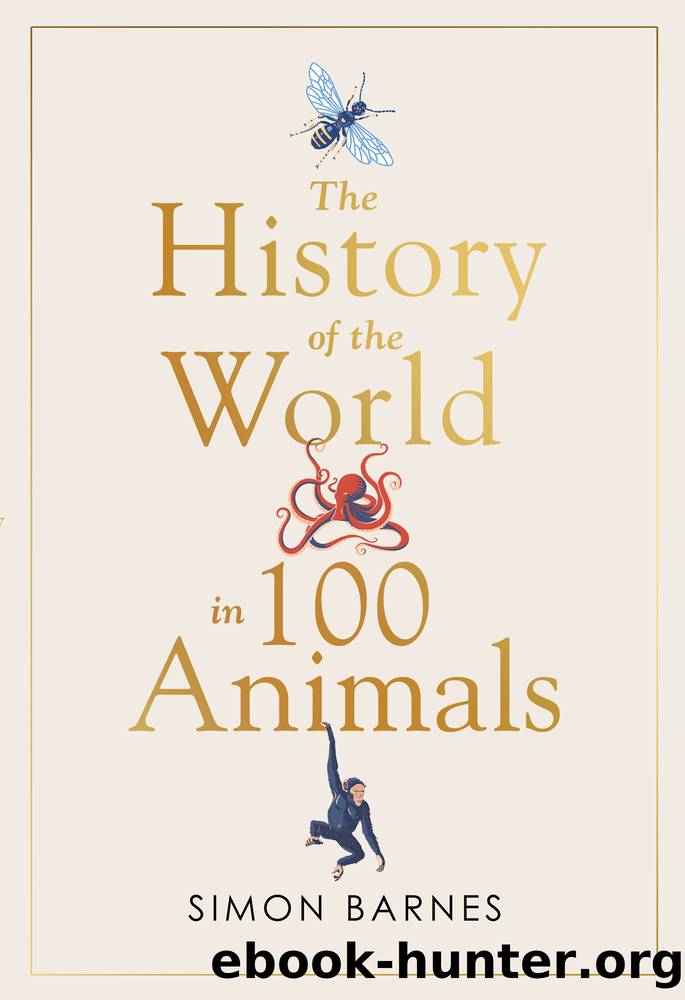History of the World in 100 Animals by Simon Barnes

Author:Simon Barnes
Language: eng
Format: epub
Publisher: Simon & Schuster UK
Published: 2020-10-15T00:00:00+00:00
Pity and terror FIFTY-TWO
SEAL
âWhere billow meets billow, there soft be thy pillow,
Ah, weary wee flipperling, curl at thy ease!
The storm shall not wake thee, nor shark overtake thee,
Asleep in the arms of the slow-swinging seas!â
Rudyard Kipling, âSeal Lullabyâ
Itâs one of those for-all-time images: a baby seal, in its white fluffy coat, a face of 24-carat cuteness looking up in bewilderment at the human towering above him, the human wielding a special club called a hakapik, his face filled with the dispassionate eye-on-the-ball concentration of a top baseball player or cricketer. It was taken by Kent Gavin in 1968, and, like the rhino in Chapter 39, it made the front page of the British Daily Mirror. The headline: âThe Price of a Sealskin Coatâ.
Violent interaction between human and non-human animals is usually acceptable so long as we donât have to see it: the modern slaughterhouse is only the most obvious example. In the 1960s, with increasing means of communication, better travel and better equipment, we could now view images of seal hunting when sitting at our breakfast tables. In that extraordinary decade, when there was music in the cafés at night and revolution in the air, the world was full of people trying to find a better way of living. This image was a universal cry: surely, we can do better than this?
Seals have been hunted for centuries and they are hunted now. They have been hunted for meat, for fur, for leather and for the oil that can be gained from their carcasses. This has been used for soap, treating leather and, most importantly, for lighting: and in the previous chapter we looked (perhaps by artificial light) at the importance of light for humans.
There are usually reckoned to be thirty-three living species in the subgroup known as Pinnipeds, which belongs to the order of Carnivora. These include walruses, who bottom-feed on the molluscs they dig up with their tusks; sea lions, which have visible external ears and can reverse their hind flippers to move on land with comparative agility; and âtrueâ seals, with no external ears who must shuffle or hump themselves along when on land. The Pinnipeds range in size from the Baikal seal, 3¼ft (1m) long and weighing 100lb (45kg), to the southern elephant seal, up to 16ft (5m) in length and weighing 7100lb (3200kg), the worldâs largest living member of the order Carnivora.
Saviour of the seals: illustration for Rudyard Kiplingâs âThe White Sealâ from The Jungle Book (published in 1894).
Download
This site does not store any files on its server. We only index and link to content provided by other sites. Please contact the content providers to delete copyright contents if any and email us, we'll remove relevant links or contents immediately.
Everything You Need to Ace World History in One Big Fat Notebook by Workman Publishing(771)
How Things Work by Theodore Gray(577)
The School of Life Dictionary by The School Of Life(572)
Big Ideas for Curious Minds - An Introduction to Philosophy by The School of Life(564)
Time To Go by Time To Go (epub)(543)
Idioms & Phrases by Informative Books(515)
Rework by Jason Fried; David Heinemeier Hansson(475)
Letters from Cuba by Ruth Behar(436)
Creative Writing Practice by Unknown(433)
History of the World in 100 Animals by Simon Barnes(427)
A Dictionary of Computer Science by 2016(410)
Painless Pre-Algebra by Amy Stahl(410)
Tasty Finger Food Recipes for Kids: 50 Finger Foods That Make Every Meal with Your Kids a Breeze by C. Will(403)
The World's Greatest Mountain Ranges - Geography Mountains Books for Kids | Children's Geography Book by Baby Professor(396)
Critical Thinking by Gerald J. Watson Jr(382)
French Short Stories for Beginners: 20 Captivating Short Stories to Learn French & Grow Your Vocabulary the Fun Way! (Easy French Stories t. 1) (French Edition) by Lingo Mastery(362)
Write Like a Ninja by Andrew Jennings(350)
Test Your General Science Knowledge by Chris McMullen(348)
A Kids’ Guide to the Periodic Table: Everything You Need to Know about the Elements by Clark PhD Rose A. & Zovinka PhD Edward P(343)
